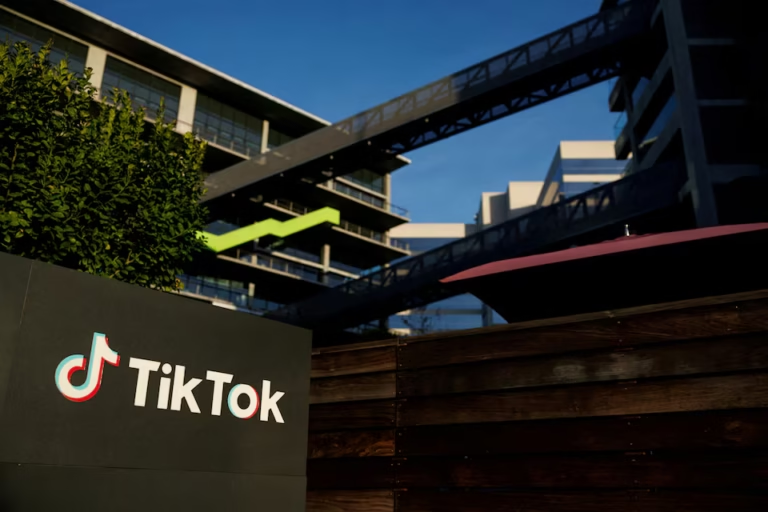In a landmark decision, the U.S. Supreme Court has unanimously upheld a ban on TikTok due to national security concerns, marking the end of the popular platform in the U.S. The shutdown, effective this weekend, threatens to disrupt the livelihoods of small businesses, influencers, and creators who rely on TikTok’s extensive reach for revenue generation. While larger brands may transition to platforms like YouTube and Instagram, smaller enterprises and individual creators face a more uncertain future.
TikTok’s Economic Footprint in the U.S.
TikTok has become a cornerstone for small and medium-sized businesses (SMBs), generating an estimated $24.2 billion in economic activity in 2023, according to Oxford Economics. This includes supporting over 224,000 jobs and helping businesses increase their sales by $14.7 billion last year.
The platform’s e-commerce arm, TikTok Shop, has been particularly transformative for entrepreneurs like Mama V’s Candy, which achieved $6 million in revenue and sold over 300,000 units of sour candies in 2024. Similarly, beauty brand Simply Mandys reported $20 million in sales through TikTok Shop, with 95% of its revenue tied to the platform.
Impact on Small Businesses and Influencers
While major corporations have contingency plans to pivot their marketing efforts to Instagram and YouTube, SMBs and influencers are less prepared for this drastic change. Key challenges include:
- Loss of Direct Customer Engagement: TikTok’s privacy policies limit access to customer data, such as email addresses and shipping information, making it difficult for businesses to retain and transition their audiences.
- Revenue Loss: Influencers with 10,000 to 100,000 followers typically earn around $2,000 per brand campaign, while top creators rely on TikTok as their primary income source. The ban threatens to cut off this revenue stream entirely.
- Inventory Overload: Many TikTok-based shops are holding clearance sales to offload inventory in anticipation of decreased traffic.
Sven Greany of Simply Mandys highlighted this challenge, noting that without TikTok, “essentially, our customers disappear.”
Big Brands Prepare for the Transition
Companies like Procter & Gamble and Sephora have been proactively preparing for TikTok’s potential ban since early 2024. Marketing teams are reallocating budgets to platforms with similar short-form video capabilities, such as Instagram Reels and YouTube Shorts.
“We go where our community is,” said Kory Marchisotto, Chief Marketing Officer at e.l.f. Beauty. “If they shift to other platforms in the future, we’ll be right there with them.”
The Rise and Fall of TikTok in the U.S.
Once the hub for beauty and e-commerce trends, TikTok’s meteoric rise reshaped the digital marketing landscape. Brands like Made By Mitchell, which became the first UK beauty company to hit $1 million in a single day on TikTok Shop, have leveraged the platform’s ability to drive immediate sales.
However, this success is now overshadowed by the national security concerns that led to the ban. The Biden administration and U.S. lawmakers cited fears over ByteDance’s ties to China, emphasizing the potential risks to user data and privacy.
What’s Next for Small Businesses and Influencers?
As TikTok users brace for the blackout, many are pivoting to alternative platforms to maintain their presence. Popular options include:
- Instagram Reels: Offers a similar short-form video experience, making it a natural transition for creators.
- YouTube Shorts: A growing platform with opportunities for monetization and audience engagement.
- Pinterest and Snapchat: Emerging as niche options for influencers in specific industries like fashion and lifestyle.
For entrepreneurs like Valerie Verzwyvelt of Mama V’s Candy, rebuilding on new platforms is the only option. “We’re on our second expansion, but now I have to rebuild my business,” she said.
Key Takeaways for the Future
The TikTok ban serves as a wake-up call for businesses and influencers heavily reliant on a single platform. Diversifying marketing efforts across multiple channels can help mitigate risks and ensure long-term stability. Companies and creators are encouraged to:
- Develop multi-platform strategies to reach audiences on Instagram, YouTube, and emerging networks.
- Focus on collecting first-party customer data to maintain engagement outside of platform-specific ecosystems.
- Stay informed about regulatory changes that may impact digital marketing landscapes.
Conclusion
The end of TikTok in the U.S. marks a significant shift in the digital marketing ecosystem. While some businesses and influencers may struggle to recover, others see it as an opportunity to diversify and innovate. The future of social media marketing lies in adaptability, and those who can navigate these changes will emerge stronger in the evolving landscape.
Stay updated on the latest digital trends and strategies for adapting to platform changes. Subscribe to our newsletter for expert insights and actionable advice.







